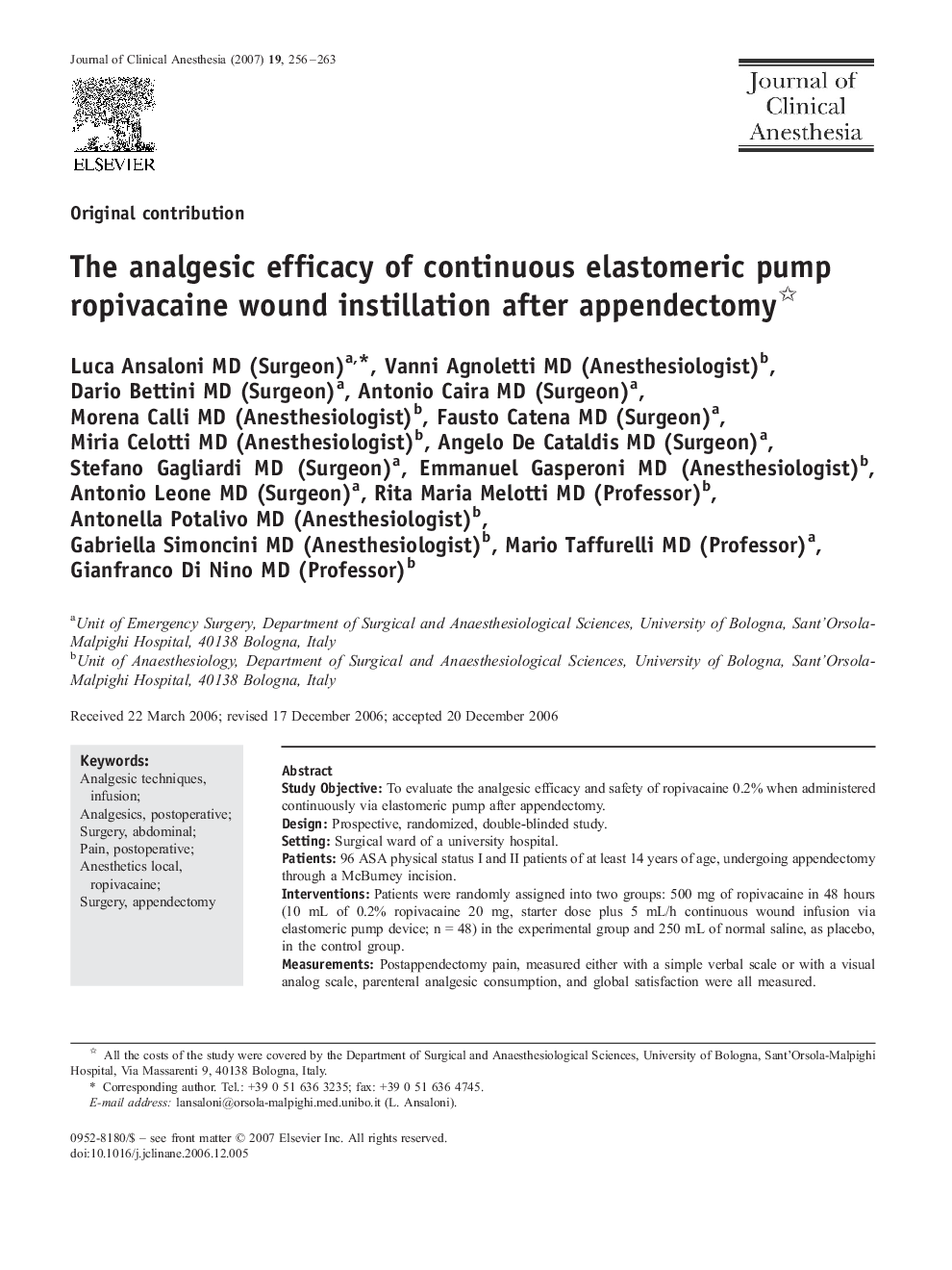| Article ID | Journal | Published Year | Pages | File Type |
|---|---|---|---|---|
| 2763971 | Journal of Clinical Anesthesia | 2007 | 8 Pages |
Study ObjectiveTo evaluate the analgesic efficacy and safety of ropivacaine 0.2% when administered continuously via elastomeric pump after appendectomy.DesignProspective, randomized, double-blinded study.SettingSurgical ward of a university hospital.Patients96 ASA physical status I and II patients of at least 14 years of age, undergoing appendectomy through a McBurney incision.InterventionsPatients were randomly assigned into two groups: 500 mg of ropivacaine in 48 hours (10 mL of 0.2% ropivacaine 20 mg, starter dose plus 5 mL/h continuous wound infusion via elastomeric pump device; n = 48) in the experimental group and 250 mL of normal saline, as placebo, in the control group.MeasurementsPostappendectomy pain, measured either with a simple verbal scale or with a visual analog scale, parenteral analgesic consumption, and global satisfaction were all measured.Main ResultsA reduction in postoperative pain was observed in the ropivacaine group. Degree of pain, with a simple verbal scale measurement of severe and unbearable, was significantly lower in the ropivacaine group than in the normal saline group from time 0 to 24 hours at rest and from time 0 to 36 hours on coughing. A significant lower pain intensity (visual analog scale) was found in the ropivacaine group both at rest and on coughing, beginning at three hours and continuing to 36 hours postoperatively. The mean number of rescue analgesic doses was significantly lower in the ropivacaine group. There were no statistically significant differences in the frequency of adverse events between the two groups.ConclusionsWound instillation with ropivacaine 0.2% is a useful, practical, and safe method for management of postoperative pain after appendectomy.
